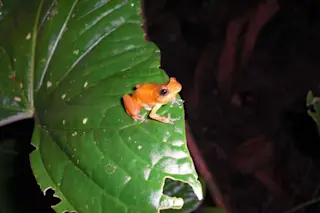Frogs, like this one of the genus Diasporus, are surviving a deadly fungus in El Copé, Panama. (Credit: Graziella DiRenzo) A community of frogs in Panama may have built up resistance to a deadly fungus that has imperiled one third of the amphibian population around the world, according to a paper published Wednesday [Oct. 3] in Ecological Applications. The fungus is called Batrachochytrium dendrobatidis, or Bd. It's also commonly referred to as chytrid fungus. In 1999, researchers linked amphibian deaths, mostly frogs, to specific strains of the fungus, which attacks the animals’ skin. Frogs use their skin for respiration, and the damage caused by Bd can disrupt this function and lead to death. A May study in Science argued that Bd originated on the Korean Peninsula 50 to 120 years ago. The fungus likely spread globally via amphibian exports for food, traditional medicine and pets. The question scientists have wrestled ...
These Frogs Evolved Resistance to Deadly Chytrid Fungus
Discover how frogs in El Copé, Panama, are resisting a deadly fungus, offering hope for amphibian populations battling Bd.
More on Discover
Stay Curious
SubscribeTo The Magazine
Save up to 40% off the cover price when you subscribe to Discover magazine.
Subscribe













